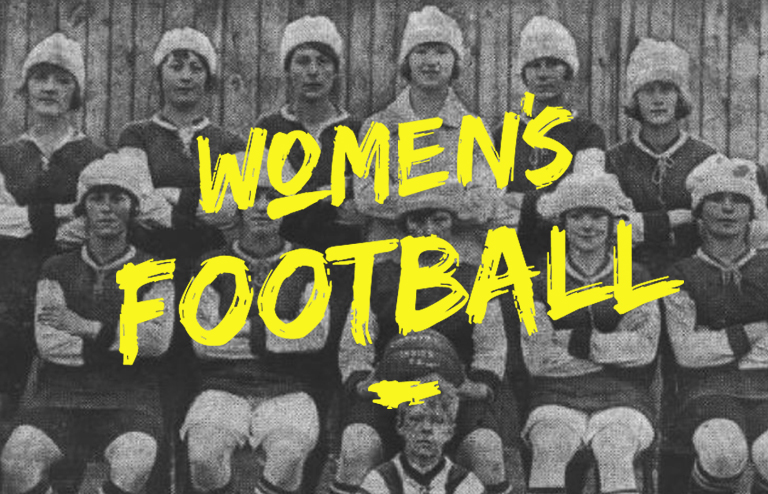Share the Knowledge session
‘Women’s Football’ by Caitlin Walsh
From a young age, I have always been involved in some kind of sporting activity – netball, swimming, rugby, rounders, athletics, basketball, badminton…. the list is endless! However, from around the age of 11, football was the sport that stuck. Sure, back then you would get the odd snigger from the lads at the park or at school, “Girls can’t play football”. A couple of keepy upies, threaded through passes and the odd crunching slide tackle later, it’s safe to say that opinion had changed.
Today, a woman in sport is more the norm than it ever has been. Of course, in such a male dominant activity such as football, there are always going to be those that don’t take us seriously. But when did that ever stop us?
Women’s football has a longer history than many people realise. In the late 18th century there were multiple women’s football clubs around the country, many of which drew a lot of attention with thousands in attendance.
It was during this period that fit and healthy men were called up to serve in the first world war, leaving behind factory jobs then taken up by the women left at home. Many of these factories would set up football teams for their workers to keep up moral and spirit during such a hard time.
The factory teams, now replenished by the women workers, would play against each other and became hugely popular. A game played on Boxing day, 1920 at Goodison Park between St Helens Ladies and the most famous women’s team of the era Dick Kerrs Ladies pulled a crowd of 53,000 spectators. To put that in perspective, the Everton men’s highest attendance in the 2014/2015 season was 39,000.
All concessions collected at each of these games were donated to charities for injured men returning from war, as well as children’s charities.
As the men started to filter back home from war and took back their jobs, the women’s game faded. Many men were resentful of the fact that the women had ‘out done’ the men in terms of interest and achievement in football. Unfortunately, in 1921, the FA banned women from using FA affiliated grounds and facilities.
“The game of football is quite unsuitable for females and ought not to be encouraged”.
Even though many women continued to play, a lot of teams disintegrated and women’s football once again became a rarity.
In 1971, the ban was finally lifted following the formation of the Women’s Football Association (WFA) in 1969. Even though women’s football started to regain ground again here, it was really in America that the women’s game really took off.
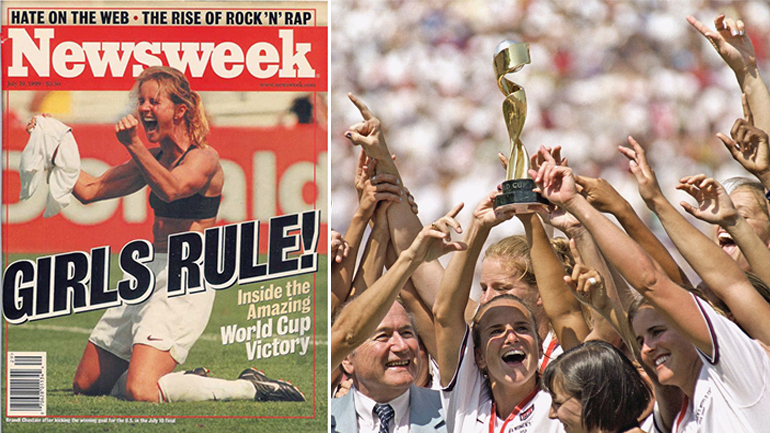
In the USA, women’s soccer has always been more popular than the men’s game. In the 1980’s, hard-working, unwavering and inspirational young women have took the game of soccer from nothing to being the top of Americas sporting world. These women fought for every penny of funding, which preferably went to there male counterparts, and took the women’s game to new heights, becoming more profitable and more successful than the men’s game.
‘Arguably their most influential and memorable victory came in the 1999 World Cup when they defeated China 5–4 in a penalty shoot-out following a 0–0 draw after extended time.[10] With this win they emerged onto the world stage and brought significant media attention to women’s soccer and athletics. On July 10, 1999, over 90,000 people (the largest ever for a women’s sporting event and one of the largest attendances in the world for a tournament game final) filled the Rose Bowl to watch the United States play China in the Final.’
After this win, the women’s team became national celebrities and were featured on the front pages of newspapers and magazines and also appeared in advertisement.
Out of the seven women’s World Cup tournaments held, the US has won three, making them the most successful women’s soccer team in the world. Their most recent tournament win was the World Cup last year, held in Canada.
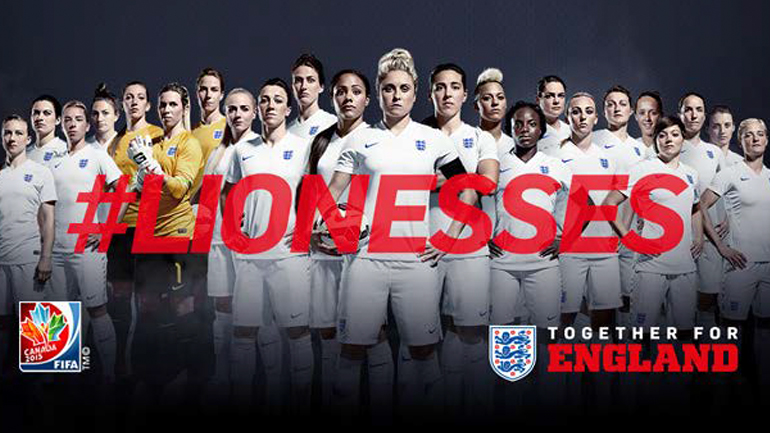
It was at this tournament the England women’s team had their most successful run in a World Cup, winning a bronze medal after being knocked out by Japan IN the Semi-finals in devastating fashion – a freak own goal in the dying seconds of the match.
Throughout the tournament and through England’s growing success at each stage, the country started to get behind the women’s team. This was aided through cool new campaigns, advertisements, interviews and the fact the each match was aired live on the BBC – a big deal for the women’s game! Even though England got knocked out in the cruellest way, their hard work gave the women’s game in this country a lot more recognition and respect, especially after recent, disappointing performances from the country’s men’s team.
Women’s football is one of the fastest growing sports in the world, with over 30 million women participating world-wide.
And I am one of them.
At a young age, my mum encouraged me to join the local gymnastics team, but it never really made an impression on me and I wasn’t all that interested. It was this disinterested, and frankly, the fact that I had a short attention span, that accidentally got me started in football. I was supposed to turn up to a gymnastics competition, but hadn’t been listening to the details of the event at practice. We turned up to the local school and there were no gymnasts to be found. But there were loads of girls playing in a football tournament. The rest is history!
I started playing for Hebden Bridge aints, a local team in the area I grew up in. A few years later, many of my friends had moved to a newly formed team, Hebden Royd United Ladies, which is a club created exclusively for women and girls.
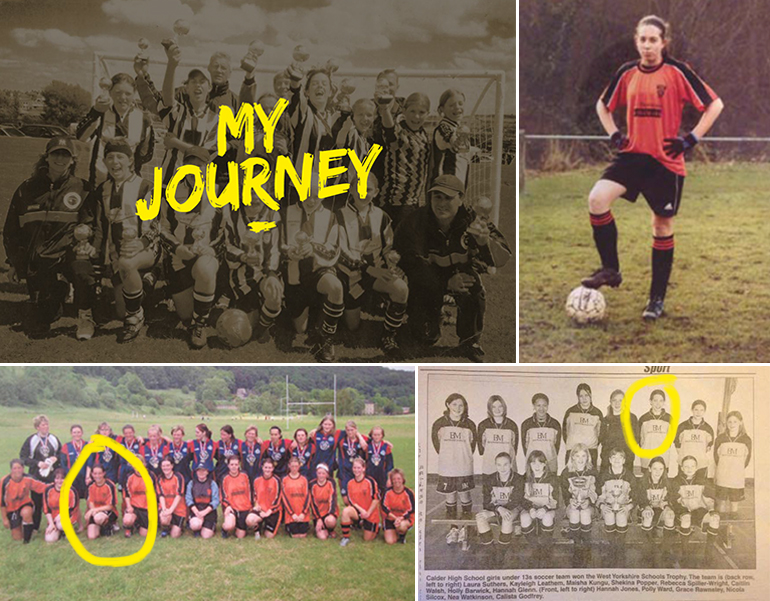
As I gained confidence and grew more skilful and knowledgeable about the game, my Dad became a massive role model for me. He had once played at quite a high level and had coached many of the local school and afterschool boys teams. My Dad basically became my personal coach as well as a taxi service. I progressed to a higher level, playing for a team in Lancashire – Padiham F.C.
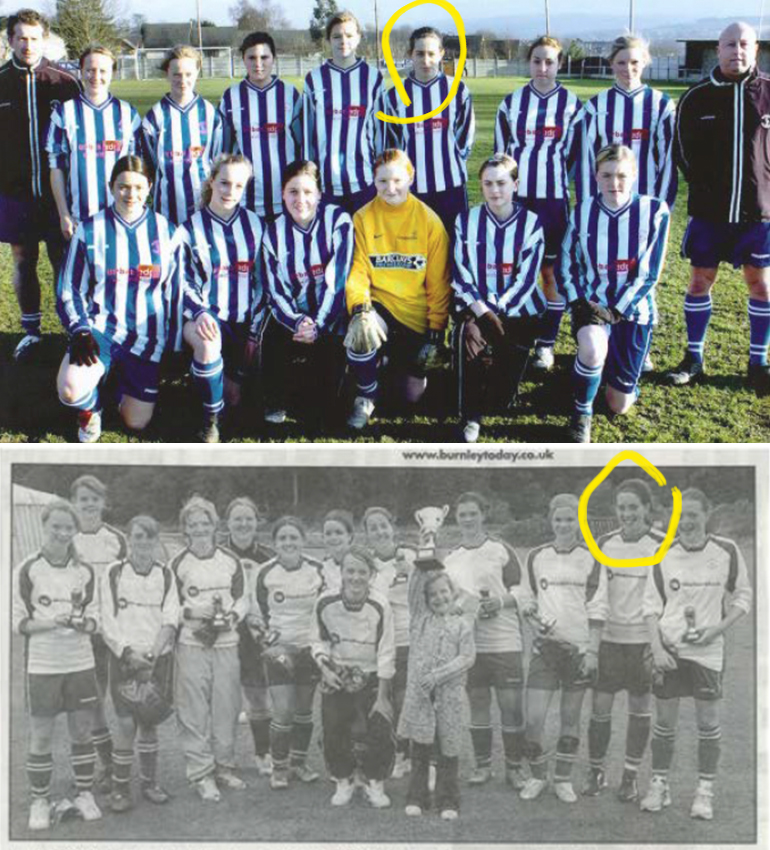
From there I attended trials for the Blackburn Rovers under 16’s team as well as their centre of excellence programme. I managed to get selected for both teams, which meant I would train twice a week and play matches at the weekend. This was in the hope that I could then progress to the Rovers second team and then eventually the first team.
During my time with the under 16’s team, we won both the cup and the league with an unbeaten record. With this success, we automatically thought we would be taken on to the reserves team which was the next step up. Unfortunately, due to new management, among other reasons, only 2 or 3 were taken on. Myself, along with most of the other girls that had given up so much and tried so hard to get there, were dropped. To say I was gutted was an understatement. For a 16 year old, it was a tough blow to take.
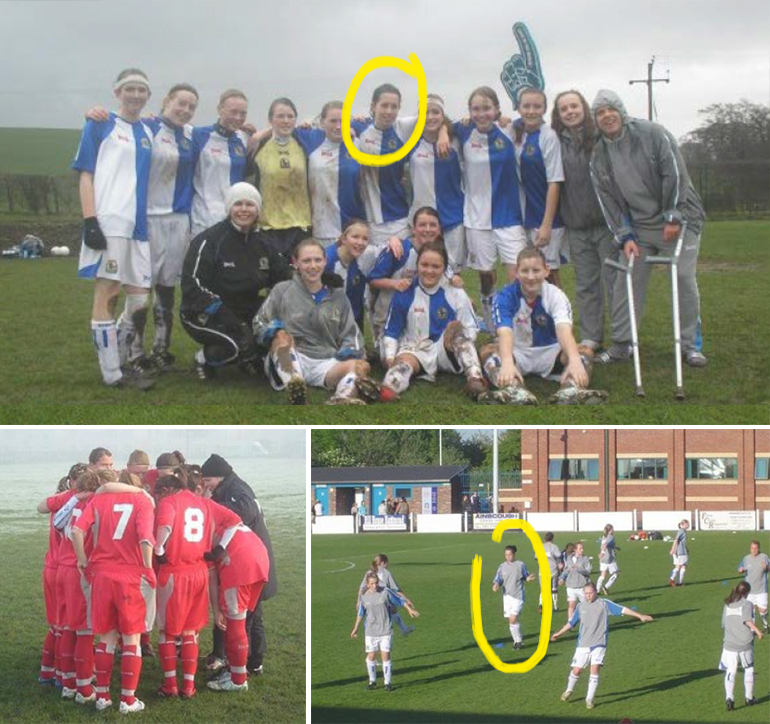
After a summer out however, I got a call back from the Blackburn Rovers Football Club and they decided to take me back and sign me up for the Rovers Reserve team. This was the highest level I got to play at. Our first team at the time were a part of the women’s premier league, but I never quite managed to get to that level. This was mainly due to injury as well as a lack of confidence – Having that niggle in the back of my mind that I was disposable and I could be dropped at any time, no matter how hard I worked. My heart just wasn’t in it as much as it should have been.
I left Rovers for good at the end of my second season there and signed for Preston North End. Unfortunately my time at this club was cut short due to a reccurring ankle injury. I decided to move closer to home and joined Huddersfield Town Ladies. However, again I just wasn’t committed and lacked motivation. After one season at Town, I decided to pack it in. My heart just wasn’t in it any more and I decided to focus my time and energy on other things.
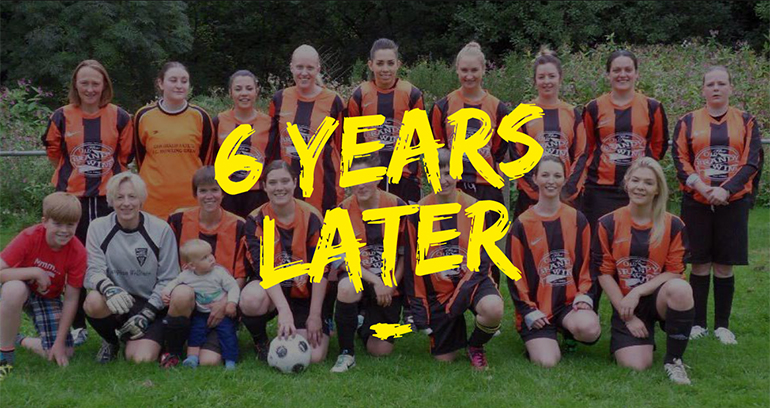
6 years later, I found myself in the Graphic Design industry. An industry in which you can’t really ‘win’. Everything is decided through the opinions of others. Whether it is the opinion of your client, your seniors, or your target audience. Obviously you can be successful, but this is dependent on so many variables. You might have one project that is very successful, and another is unsuccessful. This can be quite a stressful environment for someone who is highly competitive. It was for this simple reason that I decided to lace my boots back up.
For me, football is now a release. When I walk on a football pitch, I know what my job is and I know what I have to do to win at my role on that pitch. This does not mean I am an amazing footballer, not by a long shot. I make loads of errors, but I know what those errors are, I don’t need anyone else to tell me because I understand my game.
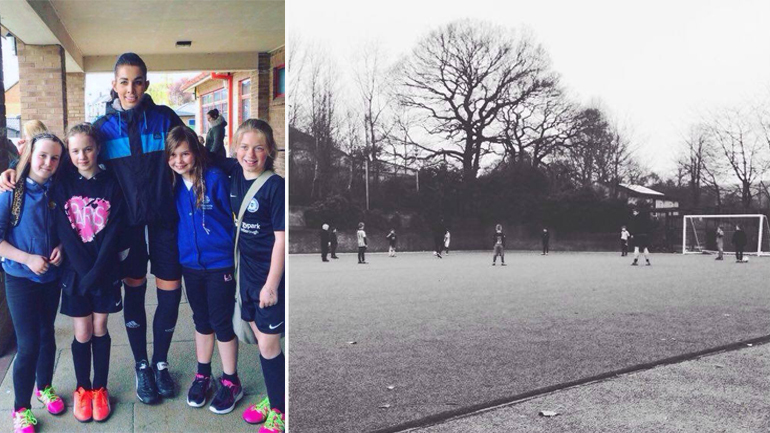
As well as playing for my old team Hebden Royd United, I am now also helping to coach the younger generation at my other old team, Hebden Bridge Saints. Even though the number of little girls that take part are vastly outweighed by the number of little boys, encouraging females to join in is more the norm than it ever has been.
I am currently looking into getting a level one FA coaching badge and possible taking this spare time hobby further. I will always be an advocate for getting children involved in all kinds of sport from a young age – You never know what might come out of it. And even if nothing does, there are still valuable lessons to be learnt: Coordination, Balance, Agility, Speed, Teamwork, Social development, Communication skills, Self confidence etc.
Caitlin Walsh, Junior Designer.
